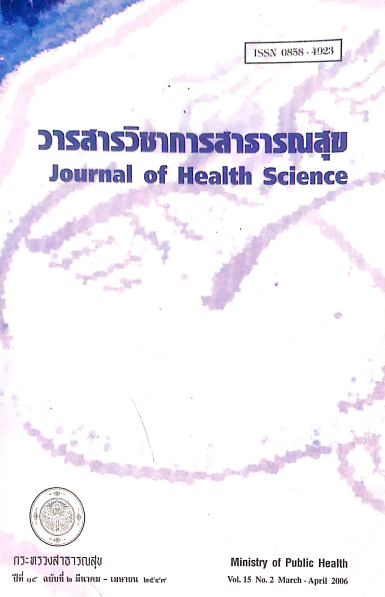Brain Tumor in Childhood: A Study of 132 cases based on the World Health Organization Classification 2000
Keywords:
brain tumors, childhood, WHO classificationAbstract
Brain tumors are one of the common neoplasms in children worldwide. Using the recentWorld Health Organization classification of the nervous system neoplasms, we reported a series of 132 brain tumors that occurred in children 15 years of age or younger (mean 7.89 years) was reported. All cases were diagnosed during August 2001 - December 2004 at the Institute of Pathology, Department of Medical Services, and Department of Pathology, Faculty of Medicine, Chulalongkorn University, Bangkok. Boys were twice more commonly affected than girls, with the supratentorium to infratentorium ratio of 1.6: 1. Neuroepithelial tumors such as astrocytomas (25.0%), ependymomas (18.9%), and embryonal tumors (14.4%) constituted the majority of the series. An incidence of germ cell tumors (12.9%) was comparable to those of other Asian populations, but was higher than those recognized in the Western countries. The common posterior fossa tumors included ependymal neoplasms (14.4%), medulloblastoma (11.4%), and pilocytic astrocytoma (6.1%). Although relatively uncommon, several tumor entities previously undocumented in Thai series of brain tumors have emerged in the current study. These included 5 subependymal giant cell astrocytomas, 3 dysembryoplastic neuroepithelial tumors, 2 atypical teratoid/rhabdoid tumors, 1 pleomorphic xanthoastrocytoma, 1 desmoplastic infantile ganglioglioma, and 1 low grade hypothalamic neuronal tumor. Recognition of these recently-described tumor entities is important for correct diagnosis and proper management of the patients.
Downloads
Downloads
Published
How to Cite
Issue
Section
License
Copyright (c) 2019 Journal of Health Science

This work is licensed under a Creative Commons Attribution-NonCommercial-NoDerivatives 4.0 International License.







